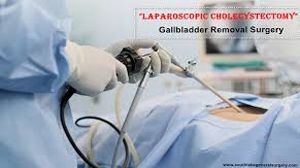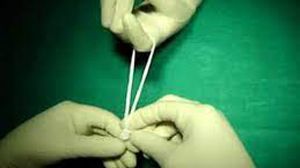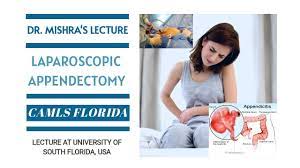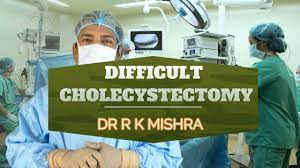Safety in Laparoscopic Cholecystectomy: Insights by Dr. Satish Midha
Add to
Share
134 views
Report
2 months ago
Description
Safety in Laparoscopic Cholecystectomy: Defining the Limits of Dissection – Insights by Dr. Satish Midha Laparoscopic cholecystectomy (LC) is one of the most commonly performed surgical procedures worldwide, recognized for its minimal invasiveness, reduced postoperative pain, shorter hospital stay, and quicker recovery time compared to open cholecystectomy. However, despite its advantages, LC carries risks, particularly related to bile duct injuries, vascular complications, and inadvertent organ damage. Dr. Satish Midha, a distinguished expert in laparoscopic surgery, provides crucial insights into the safety measures and the importance of defining the limits of dissection in LC to minimize complications and enhance surgical outcomes. Understanding the Importance of Safety in Laparoscopic Cholecystectomy Safety in LC primarily revolves around preventing iatrogenic injuries, which can lead to severe complications such as bile duct injury (BDI), hemorrhage, and peritonitis. The incidence of BDI has remained relatively constant despite advancements in surgical techniques and technology. A significant contributing factor is the misidentification of biliary anatomy, often resulting in erroneous clipping or transection of the common bile duct. Dr. Midha emphasizes that a meticulous approach, a thorough understanding of the hepatobiliary anatomy, and adherence to standardized safety protocols are paramount in reducing complications. The implementation of safe dissection techniques plays a critical role in achieving this goal. Defining the Limits of Dissection: Key Principles Dr. Midha highlights several key principles that surgeons should follow to ensure safe dissection during laparoscopic cholecystectomy: 1. The Critical View of Safety (CVS) The Critical View of Safety (CVS) is a well-established technique designed to prevent bile duct injuries. It involves three key criteria: - Only two structures should be seen entering the gallbladder – the cystic duct and the cystic artery. - The hepatocystic triangle should be cleared of fat and fibrous tissue. - The lower part of the gallbladder should be separated from the liver bed to ensure no other structures are mistakenly clipped or transected. Dr. Midha stresses that achieving the CVS before clipping and cutting structures is essential to avoid misidentification errors. 2. Safe Zone and Extent of Dissection Determining the limits of dissection is crucial to prevent unnecessary exposure to critical structures. The safe zone is typically confined to the hepatocystic triangle, where careful dissection ensures identification of the cystic duct and artery. Extending dissection beyond this area, especially in cases of severe inflammation or distorted anatomy, can increase the risk of bile duct injury. Dr. Midha advises that in difficult cases, surgeons should adopt a “stepwise approach” and be prepared to convert to open surgery if required rather than persist with aggressive dissection in a risky area. 3. Use of Intraoperative Cholangiography (IOC) Intraoperative cholangiography (IOC) is a valuable tool that enhances biliary anatomy visualization. While not always routinely performed, Dr. Midha recommends IOC in cases where there is uncertainty regarding the anatomy or suspicion of bile duct injury. IOC helps confirm ductal structures, detect stones, and prevent inadvertent injury. 4. Strategies for Managing Difficult Gallbladders Difficult gallbladders due to severe inflammation, fibrosis, or adhesions pose a higher risk of complications. In such cases, Dr. Midha suggests: - Fundus-First Approach: Beginning dissection from the gallbladder fundus and working towards the cystic duct. - Subtotal Cholecystectomy: When safe dissection is not possible, leaving part of the gallbladder in place to avoid injury to vital structures. - Early Conversion to Open Surgery: Prioritizing patient safety over the completion of laparoscopic surgery in difficult cases. Technological Advancements Enhancing Safety Several technological innovations have contributed to improving safety in LC. Dr. Midha underscores the role of: - Fluorescence Cholangiography: Using indocyanine green (ICG) to better visualize bile duct anatomy. - 3D Laparoscopy and Robotic Assistance: Providing enhanced depth perception and precision in dissection. - Advanced Energy Devices: Allowing better hemostasis and tissue handling while minimizing thermal injury. Postoperative Considerations and Monitoring Postoperative monitoring is crucial for detecting early signs of complications. Symptoms such as persistent abdominal pain, jaundice, fever, and bile leakage should be promptly evaluated. Dr. Midha emphasizes the importance of early recognition and management of complications to prevent long-term morbidity. Conclusion Safety in laparoscopic cholecystectomy hinges on defining the limits of dissection and adhering to established surgical principles. Dr. Satish Midha’s insights reinforce that a meticulous, stepwise approach, combined with modern technology and sound surgical judgment, can significantly reduce complications. By prioritizing patient safety and adapting to challenges as they arise, surgeons can continue to improve the outcomes of laparoscopic cholecystectomy, ensuring it remains a gold standard for gallbladder surgery.
Similar Videos






